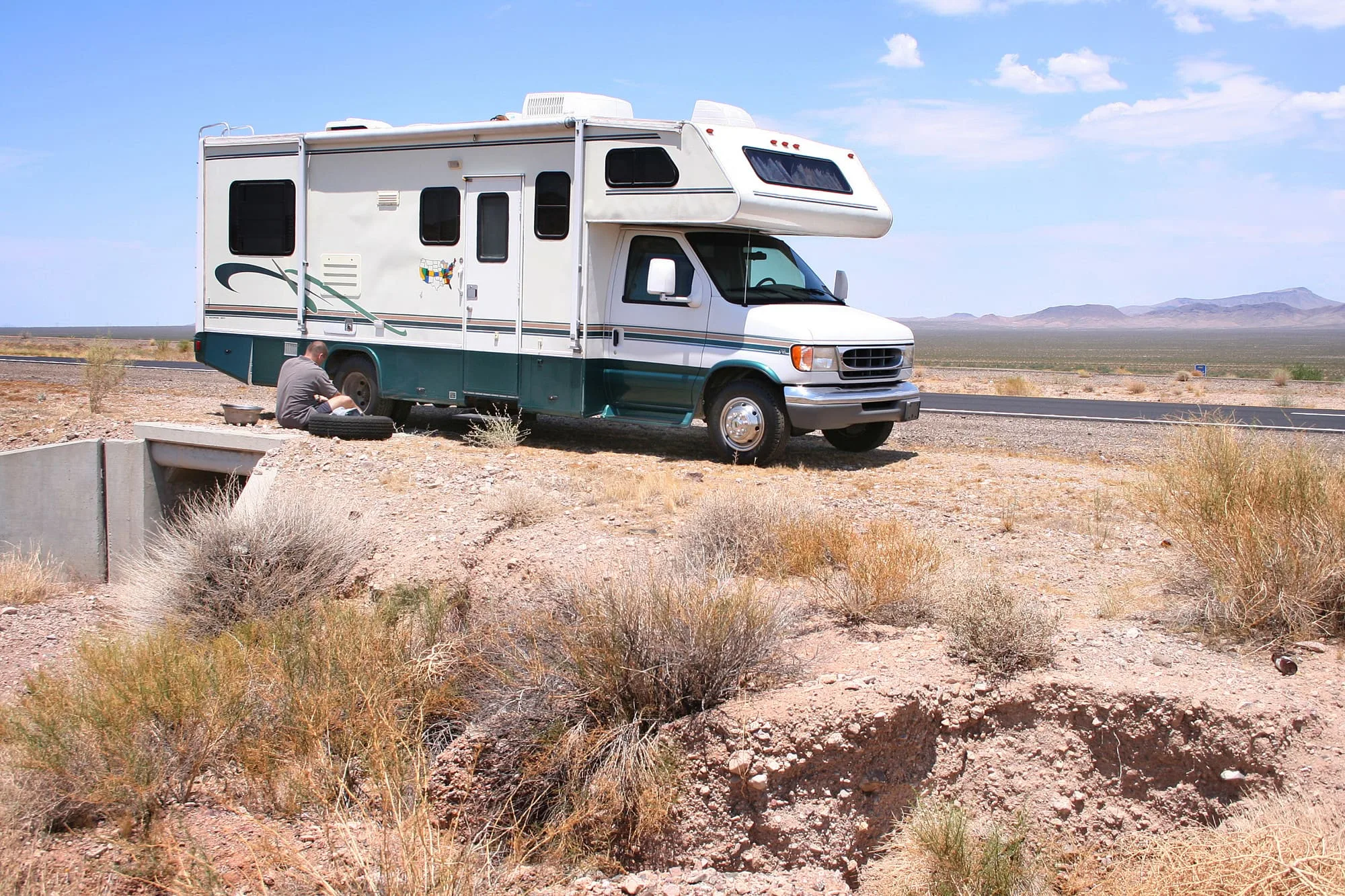RVs provide the freedom to explore the open road, but a flat tire can quickly disrupt your journey. Knowing how to change an RV tire is essential for every RV owner. In this guide, we’ll walk you through the process step by step, ensuring you’re prepared for any roadside mishap.
When to Change RV Tires – Signs of Wear and Damage
RV tires undergo significant wear and tear due to their weight and long-distance travel. Here are some signs that indicate it’s time to replace them:
- Cracks or Bulges – Visible cracks on the tire’s surface or sidewalls signal aging and potential blowouts.
- Low Tread Depth – If the tread is worn below 2/32 of an inch, it’s time for a replacement.
- Uneven Wear Patterns – This could indicate alignment issues, poor inflation, or suspension problems.
- Excessive Vibration While Driving – This might suggest tire imbalance or internal damage.
- Tires Over Six Years Old – Even if they look fine, rubber degrades over time, making older tires risky.
Essential Tools You Need to Change an RV Tire
Before hitting the road, ensure you have the right tools to handle a flat tire situation:
- Tire Jack for RV – A heavy-duty hydraulic bottle jack or scissor jack to lift your RV safely.
- Spare RV Tire – Always carry a properly inflated spare tire.
- Lug Wrench or Torque Wrench – Necessary to loosen and tighten lug nuts correctly.
- Wheel Chocks – Prevents movement while changing the tire.
- Work Gloves & Safety Gear – Protects your hands and ensures safety.
- Portable Air Compressor – Helps to inflate the spare tire if needed.
- Flashlight & Reflective Triangles – Essential for visibility if changing a tire at night.
Step-by-Step Guide to Changing a Camper or Travel Trailer Tire
If you encounter a flat tire while traveling, follow these steps to replace it safely:
- Find a Safe Spot – Pull over on level ground, away from traffic.
- Engage the Parking Brake – Ensure your RV won’t roll during the tire change.
- Use Wheel Chocks – Place them on the opposite side of the flat tire for stability.
- Loosen the Lug Nuts – Use a lug wrench to turn them counterclockwise but don’t remove them yet.
- Jack Up the RV – Position the tire jack under the frame near the affected wheel and lift the RV until the tire is off the ground.
- Remove the Lug Nuts & Old Tire – Take off the lug nuts and carefully remove the flat tire.
- Install the Spare Tire – Align the spare tire with the wheel bolts and place it onto the hub.
- Tighten Lug Nuts by Hand – Secure the lug nuts partially before lowering the RV.
- Lower the RV & Fully Tighten Lug Nuts – Lower the jack slowly, then use a torque wrench to tighten the lug nuts to the manufacturer’s specifications.
- Check Tire Pressure – Use a portable air compressor to ensure the spare tire is at the correct PSI.
- Drive Cautiously – If using a temporary spare, drive to the nearest service station for a permanent solution.
When to Call for Professional RV Tire Assistance
Sometimes, changing a tire isn’t feasible due to location, lack of tools, or safety concerns. Here’s when you should call for professional help:
- If You’re on a Busy Highway – Safety should always be the top priority.
- If You Don’t Have the Proper Equipment – RV tires are heavy, and lifting them without the right tools can be dangerous.
- If You Suspect Additional Damage – A blowout can sometimes cause axle or suspension damage.
- If You’re Unsure of the Process – Don’t take risks; calling a professional towing service ensures proper handling.
Conclusion
Knowing how to change an RV tire is a valuable skill that ensures your travels remain uninterrupted. With the right tools and knowledge, you can handle a flat tire situation confidently. However, if you find yourself in a tough spot, don’t hesitate to call a professional towing service for assistance. Safe travels!
FAQs
How do you safely change a tire on an RV?
Ensure you park on level ground, use wheel chocks, and follow the proper jacking and lug nut tightening sequence. Always wear safety gear.
What tools are needed to change an RV tire?
A heavy-duty tire jack, lug wrench, spare tire, wheel chocks, and a torque wrench are the essential tools for changing an RV tire.
Do RV tires need to be balanced after replacement?
Yes, getting your RV tires balanced after installation ensures even tread wear and a smoother ride.
How do I know if my RV spare tire is in good condition?
Check for proper inflation, no cracks, and sufficient tread depth. Replace the spare if it’s older than six years or shows signs of wear.


